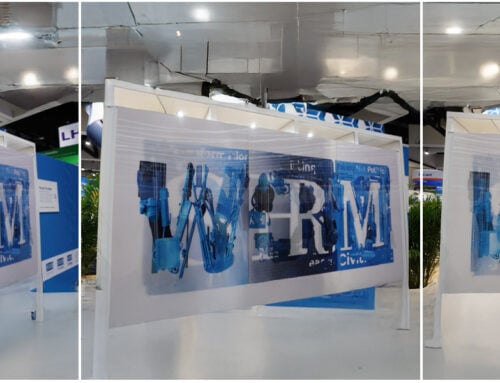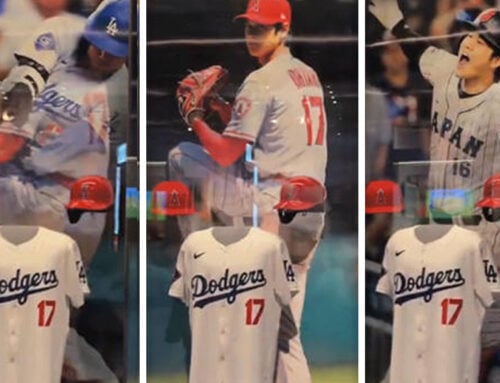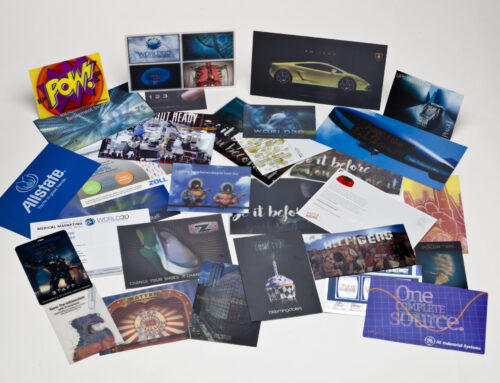Welcome to the fascinating world of lenticular printing—a technique that brings images to life through animation or creates stunning 3D effects. If you’re new to this technology you are probably asking, “how exactly does lenticular printing work”? Luckily, you’ve come to the right place to learn all about what lenticular is and what it can do for your marketing campaign. At World3D, we’re not just specialists; we’re enthusiasts ready to guide you through the ins and outs of lenticular printing, ensuring your project not only meets but exceeds expectations.
Lenticular printing might sound complex, but it’s a concept many of us have unknowingly enjoyed in various forms, from animated cereal box prizes to the dynamic covers of blockbuster DVDs. At its heart, lenticular printing is a specialized process that uses lenticular lenses—tiny lines formed in plastic, to produce images with an illusion of depth or motion. Most often, it is used to show different images, depending the viewing angle.
How It Works: The Science Behind the Magic
The magic of lenticular printing unfolds in several stages:
- Image Preparation: The journey begins with us preparing the digital images that are supplied by the client. Depending on the desired effect—be it motion or 3D—the images are carefully segmented into thin strips.
- Interlacing: The images are then intricately woven in a specific sequence to form a composite image. While this composite might look less than desirable in it’s raw form, it’s the canvas upon which the lenticular effect is brought to life.
- Lenticular Lens Application: The interlaced image is printed onto the back of a lenticular lens sheet. This sheet is not your ordinary plastic but a carefully engineered piece composed of numerous tiny lenses. These lenses are the key players in transforming a static composite into a dynamic visual experience.
- Viewing Magic: The orientation and design of the lenticular lenses direct light from the images to your eyes in a controlled manner. For animated effects, the lenses allow only one image strip to be seen from a specific angle, creating the illusion of motion as the viewing angle changes. In 3D prints, the lenses project slightly different images to each eye, fooling the brain into perceiving depth.
Types of Lenticular Images
Lenticular printing is versatile, catering to a wide array of visual effects:
- Animated Lenticular Prints: These can range from simple flips to complex animations, appearing to move or change as you alter your viewing angle.
- 3D Lenticular Images: Unlike their animated counterparts, 3D lenticular prints don’t rely on motion. Instead, they use layered images to craft a sense of depth, making the scene or object pop out from the surface.
Choosing the Right/Left vs Up/down Animated Lenticular Effect
The lenticular can be produced to either animate as the angle of view changes left to right or up and down. This difference lies in the direction of the lens. Horizontal lenses result in an up/down animation and vertical lenses result in a left/right animation. Up/down suits handheld items best, inviting the viewer to tilt the piece, while vertical lenses are ideal for displays that capture the attention of passersby through side-to-side motion.
Crafting Excellence in Lenticular Printing
While the basics of lenticular printing are straightforward, mastering this art form requires expertise and precision. Every step, from image selection and interlacing to choosing the appropriate lenticular lens, demands a nuanced understanding of the technology and its capabilities. That’s where the experience and skill of a dedicated lenticular printing company become invaluable.
Your Partner in Innovation
At World3D, we’re not just service providers; we’re your partners in bringing visionary projects to life. With over 30 years of experience in producing lenticular prints for a diverse range of clients and applications, we’re equipped to transform your creative concepts into captivating results. Ready to take your marketing or project to the next dimension? Reach out to World3D, where innovation makes an impact.








